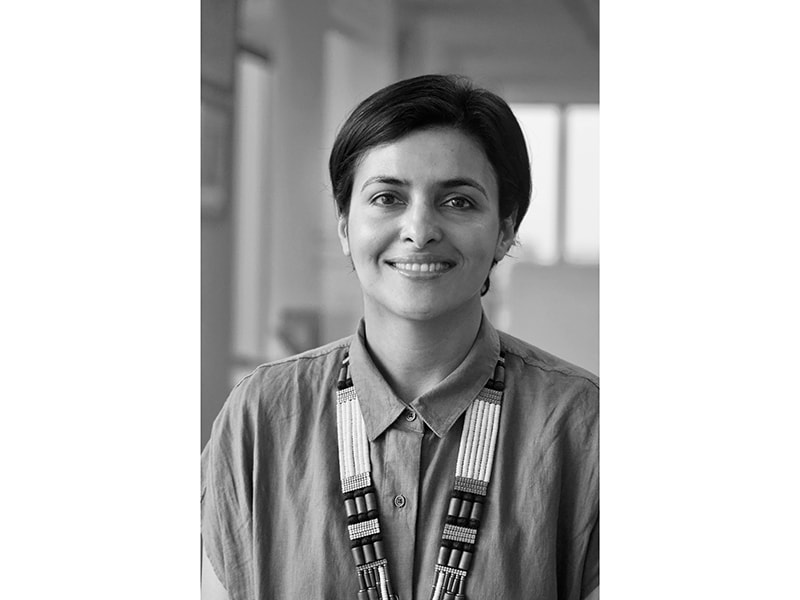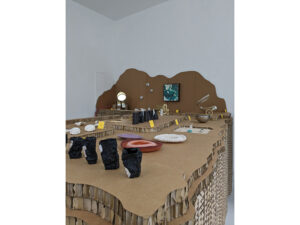Called Craft & Legacy: Writing a History, Preserving a Field, the conference was presented by Haystack in collaboration with the Center for Craft[1] and “designed to surface issues and identify solutions to vital questions facing the preservation and legacy of the field of American craft.” Atiyah Curmally, a master’s degree candidate in the Smithsonian-Corcoran George Washington University Decorative Arts and Design History program, attended the event and kindly provided AJF with a review of the proceedings.
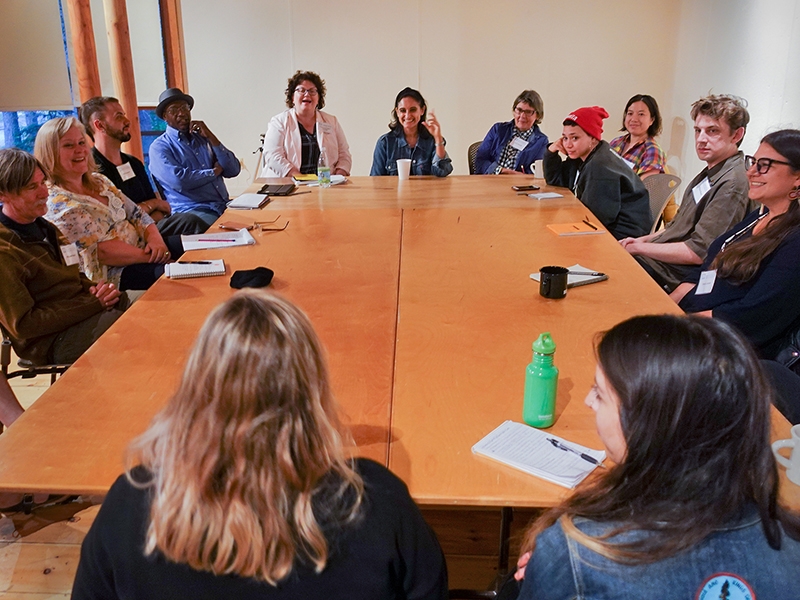
What are the vital questions?
The conference was built on the findings of the Center for Craft’s October 2014 Craft Think Tank on the legacy of the American studio craft movement. The expert gathering focused on the needs of the curatorial community, selected for the generational shift occurring in the curatorial field. Participants were asked, “What are the obstacles and opportunities for exhibiting objects and making in the 21st century, what does it mean to be a “craft” curator in a post-disciplinary creative landscape, and how can we strengthen the display, documentation, and preservation of objects?” Participants also considered how matters like diversity, technology, and interdisciplinarity inform the future of craft curating.
The Think Tank identified the uncertain future of American studio craft collections as one of the foremost issues facing the craft field. American studio craft collectors are seeking to create a legacy for their collections, but museums will be unable to acquire every important work of craft due to the volume of gifts and donations and the limitations (and cost) of storage space. A subset of Think Tank participants later recommended the creation of a two-pronged approach to record, preserve, and honor collectors and the history of their collections, as well as connect collectors with museums to ensure the legacy of the American studio craft movement.

The Haystack conference was organized therefore from the three related perspectives of museums and cultural institutions, artists, and collectors to explore the dilemma facing craft collections. The goal was to share curatorial practice and scholarship, generate dialogue, and foster an expanded resource network for colleagues from across the country through a series of lectures, panel discussions, and group conversations. Half of those in attendance (both presenters and participants) were artists and curators. The majority of the rest were scholars, representatives from institutional infrastructure, and collectors. Galleries and auction houses made up the minority—perhaps 4%.
Set on Deer Isle, 60 miles southwest of Bangor, ME, USA, with astonishingly beautiful views of the Atlantic coastline and designed by award-winning architect Edward Larrabee Barnes, Haystack’s iconic campus is a reflection of craft ideals with its focus on community, sustainability, and creativity. It’s hard to imagine a more fitting setting to look back on the legacy, reflect on the present moment, and ponder the future of craft in America. As with all extended, stay-over conferences, discussions spilled over into meal times, during walks to and from lectures, and in after-dinner conversations where participants came together in intimate, informal settings under the star-filled Maine night sky.

What did the sessions cover?
In the opening keynote, Elisabeth Agro, The Nancy M. McNeil Associate Curator of American Modern and Contemporary Crafts and Decorative Arts at the Philadelphia Museum of Art, reminded the audience of the essential role of museums in advancing cataloging, arguing in favor of linking craft objects through classification and nomenclature to the art history canon to allow for connections between craft and other arts. It was hard to argue with Agro’s assessment that both Robert Motherwell’s painting, Elegy to the Spanish Republic (1958–1961) and Peter Voulkos’s stacked and pierced pottery work Untitled (1956), in the collection of the Philadelphia Museum of Art, are stylistically connected examples of abstract expressionism.
Agro also called for a need to improve research, documentation, and scholarship around private craft collections, for the compilation of catalogue raisonnés of artist works, and more active management of the auction and sale of historically important craft collections to ensure robust valuations and hammer prices, and, at best, keep these collections from dispersing too widely. This was echoed in later sessions on the marketplace by galleries and auction houses.
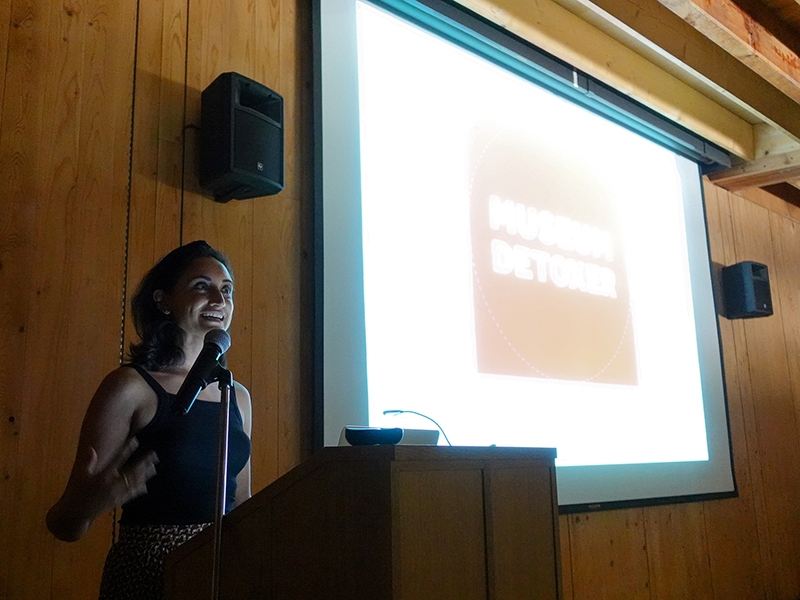
Nora Atkinson, the Lloyd Herman Curator-in-Charge at the Renwick Gallery, also highlighted the role of museums in advancing definitions. Atkinson described how her boundary-pushing exhibition, No Spectators: The Art of Burning Man (2018), showcased the value of the handmade in the digital world, presented new skills and ways of making, and offered opportunities to interpret craft through the lens of technology. The show smashed attendance records, doubling the number of visitors to the Renwick compared with the previous year.
Cindi Strauss and Garth Johnson, curators at encyclopedic and regional museums—the Museum of Fine Arts, Houston (MFAH) and the Everson Museum of Art,[2] respectively—shared their perspectives on the role their institutions were best suited to play to preserve craft legacies through the acquisition of important collections, focus on medium, and evolving curatorial and exhibition practices. Later in the conference, a conversation between collector Lee Eagle and Strauss went behind the scenes of the acquisition of the Eagle collection of 180 craft works in 2010 by the MFAH, which was overseen by Strauss. They also reminded the audience of artists and collectors of the financial and human resource limits on museums and the need to consider alternative solutions to collection acquisition.

The role of museums in preserving craft histories was made very convincingly by Diana Greenwold and Rachael Arauz, co-curators for the exhibition In the Vanguard: Haystack Mountain School of Crafts 1950–1969.[3] The result of four years of archival research, the exhibition is the first major survey of Haystack’s impact on American art, craft, design, and culture in the 20th century. All of us in the audience were reminded of the significance of the space we had gathered in and felt connected to this unique history.
The highly regarded session on re-writing histories reminded the audience of the role museums and curators assume in advancing dialogue around emerging issues such as decolonization, diversity, and representation. The presentations by Priya Khanchandani, Cinnamon Catlin-Legutko, Sarah Carter, and Folayemi (Fo) Wilson offered alternative strategies to interpreting, understanding, reimagining, and curating craft collections. These curators reminded the audience that museum representation is never neutral and there are always political, ideological, cultural, economic, and social underpinnings to consider when questioning collection and display.
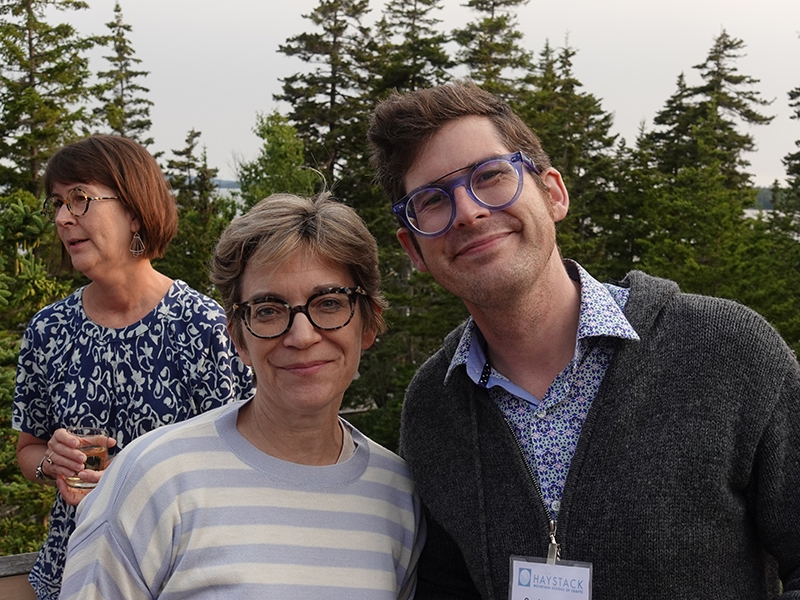
Catlin-Legutko, the driving force behind the Abbe Museum’s[4] decolonization initiative to work with Native communities in Maine to ensure collaboration, offered new models for sharing authority with Native (and historically marginalized) communities for documentation, interpretation, and curatorial perspective to allow for reinterpretation of objects in their accurate historical context as well as respect for Native and indigenous artifacts. Wilson, an artist/designer, educator, independent curator, and writer, suggested an exhibition strategy through the construction and display of alternative histories in her multi-media piece Eliza’s Peculiar Cabinet of Curiosities (2016), which imagines what a woman of African descent in 19th-century America might have collected and displayed in her own unique cabinet of wonders. Wilson challenges the perceived status of historical wunderkammers and presents a nuanced dimension of African American representation through the fictitious Eliza’s imagined collection of objects, thereby enabling Eliza to assume the role of collector and curator and asserting her right to make creative and artistic forms of social commentary about her time.

Audience favorite Mary Savig, from the Archives of American Art, in Washington, DC, described the Herculean tasks assumed by other such cultural institutions in the craft ecosystem. The Archives is the world’s preeminent and most widely used research center dedicated to collecting, preserving, and providing access to primary sources documenting the history of the visual arts in America. Consisting of more than 20 million letters, diaries, scrapbooks, manuscripts, financial records, photographs, films, and audiovisual recordings of artists, dealers, collectors, critics, scholars, museums, galleries, associations, and other art world figures, the Archives also houses the largest collection of oral histories anywhere on art. Savig shared a leaderboard of requests for papers. The most requested are the Leo Castelli Gallery records, which trace the influence of art dealer Leo Castelli and his gallery on the development of mid-to-late 20th-century modern art in America, reinforcing the importance of preserving art and craft histories and archives to set prices and value in the contemporary market.

The sessions on the marketplace also pulled together auction houses and galleries. It was hard not to feel like an insider after listening to Meaghan Roddy, Senior Vice President in the Design Department of Phillips auction houses. You felt a charge of excitement when Roddy described setting a new auction record for 20th-century American ceramics, at nearly double the previous result, with the 2017 sale of Voulkos’s Rondena (1958) for $915,000. Katya and Doug Heller, from the Heller Gallery, in New York, also shared rich personal histories about the role of glass in their own relationship and relationships they have established with artists, museums, and collectors in the world of studio glass through their influential gallery.
The remaining sessions fell into the category of support and institutional infrastructure, describing the importance of access to financial and social safety nets for artists, developing business management skills, and estate planning. Important yet sobering reminders of planning for unforeseen risks and mortality were raised and addressed by Cornelia Carey, Elizabeth Hulings, and Jim Grace. The importance of artist advocacy by artists for themselves and on behalf of others was discussed in a separate session by Daniel Minter, Squeak Carnwath, and Kathleen Mangan. Carnwath and Mangan described the work of managing artist bequests through foundations aimed at overseeing the work of individual or multiple artists. The focus of such foundations can include working with museums and cultural institutions, facilitating posthumous philanthropy, making awards and grants, and serving as an educational resource. Minter, meanwhile, described the importance of spaces to support interdisciplinary creativity, across geographies and media, to build bridges for historically marginalized communities such as from the African diaspora, which is Minter’s target group through his recently launched Indigo Arts Alliance. These were also reminders that often the best solutions to issues with preservation and legacy will emerge from the artistic community.
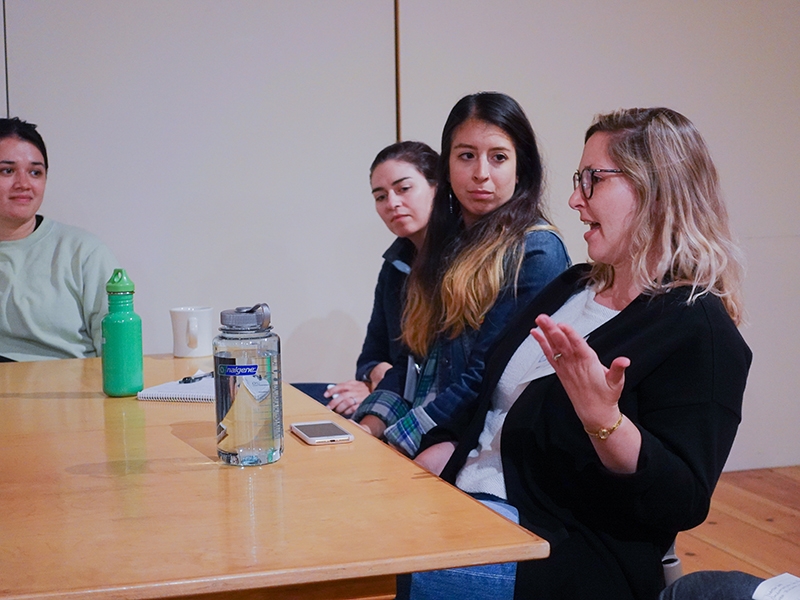
What conclusions can we draw?
There’s no question that museums will continue to set guideposts for the field of craft, advance curatorial practice, direct scholarship, and identify and propose solutions to address emerging issues in the field. The art/craft hierarchy wars appear to be at an impasse and this presents opportunities for craft-based makers and institutions to participate in the contemporary art context. The work of craft artists and collections are now considered as much of a visual index of the history of contemporary art as works of painting and sculpture. The field allows for and is supportive of generating dialogue, questioning, reexamining, and rewriting past histories and narratives. There are limits to the capacity of museums and cultural institutions, usually determined by financial and human resources to absorb growing demands made by collections. There are a number of innovations emerging from within the artist community to pool resources, explore efficiencies, and share information. The network is strong, resilient, and supportive of colleagues. After all, it’s the reason I just got to write my first review on Art Jewelry Forum.
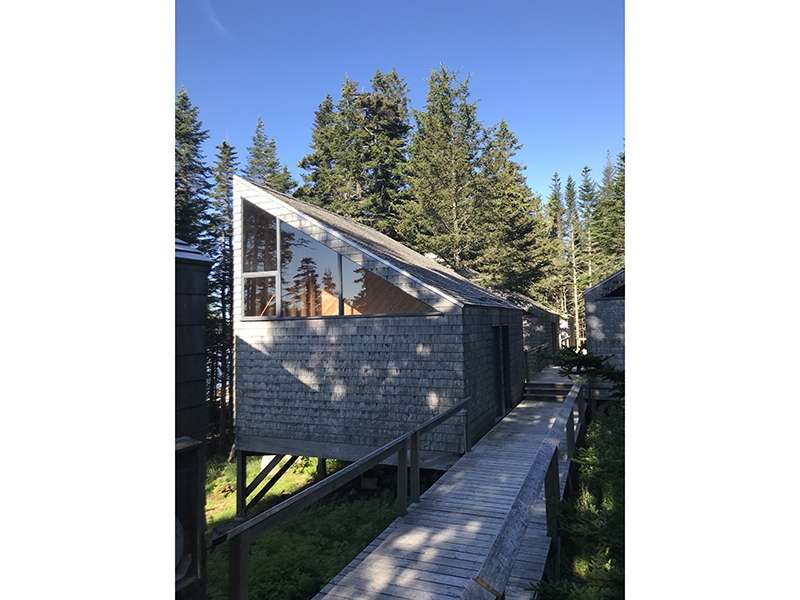
Lectures from the conference will be transcribed and published as the 35th edition of the Haystack Monograph Series and made available as an online resource through the websites of Haystack and the Center for Craft.

[1] Located in Asheville, NC, USA.
[2] Located in Syracuse, NY, USA.
[3] Organized by the Portland Museum of Art, Portland, ME, USA, and on view until September 8, 2019. The show will travel to the Cranbrook Art Museum in Bloomfield Hills, MI, USA, in fall 2019.
[4] Located in Bar Harbor, ME, USA.

